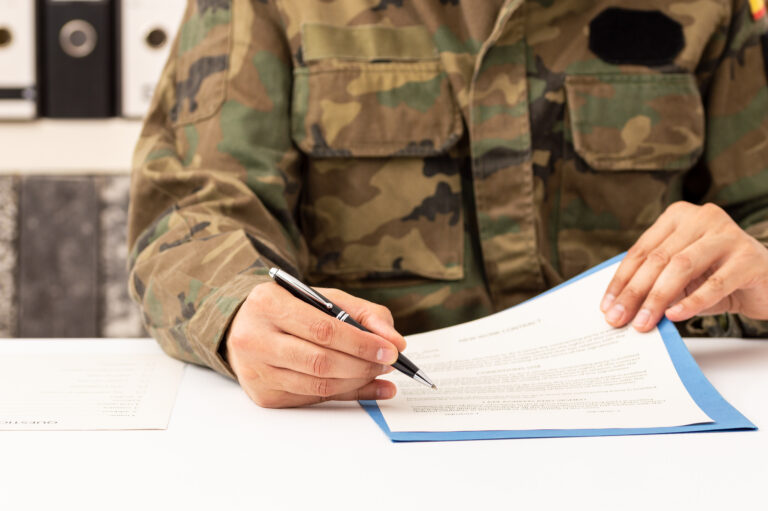Understanding Military Identification
Understanding Military Identification
Military identification (ID) plays a crucial role in various aspects of military life. It ensures the security, order, and efficiency of military operations. Understanding how these systems work is essential for both military personnel and civilians.
The Purpose of Military Identification
Military ID is used to verify the identity of service members. It grants access to military bases, facilities, and benefits. It also helps prevent unauthorized access to sensitive areas. These IDs are vital for operational security.
Types of Military Identification
There are various types of military identification cards. Each serves different purposes and is issued to specific groups within the military community.
Common Access Card (CAC)
The Common Access Card (CAC) is the most widely used. It is issued to active duty personnel, reservists, and Department of Defense civilians. This smart card contains both a photo ID and a microchip that stores important data. The CAC grants access to secure areas and is used for both physical and logical access, such as logging into military computers.
Dependent ID Cards
These cards are provided to the spouses and dependents of active duty service members. They allow access to certain benefits and services. They are essential for family members to access things like medical care and commissaries on military bases.
Retiree ID Cards
Military retirees receive ID cards that allow them to continue accessing base facilities and benefits. These cards are vital for retirees to maintain their connection to military services.
Veteran ID Cards
Veterans who have separated from active duty but don’t fall into the retired category can obtain Veteran ID Cards. These cards are useful for accessing certain veteran benefits and proving military service.
Features of Military ID Cards
Military ID cards incorporate several features to ensure security and functionality.
- Photo Identification: A clear photo of the individual is present to confirm their identity at a glance.
- Embedded Microchips: These chips store personal data and encryption keys, which are used for secure access to systems.
- Barcode and Magnetic Stripe: These elements can be scanned for quick data retrieval and access authentication.
- Expiration Dates: IDs have expiration dates to ensure information remains current and valid.
- Printed Information: This includes name, rank, and affiliation with specific branches of the military.
Issuing Authorities
Military ID cards are issued by different authorities, depending on the type of card and the branch of service.
- Active Duty and Deployed Personnel: Cards are issued by the Department of Defense (DoD) through its Defense Enrollment Eligibility Reporting System (DEERS).
- Dependents and Retirees: These IDs are also managed through DEERS. Family members often need the service member to initiate the process.
- Veterans: Veteran ID cards can be obtained through the Department of Veterans Affairs (VA).
Obtaining and Renewing Military IDs
Getting a military ID involves specific steps. Service members and their families must provide proof of identity and eligibility. This usually means presenting documents such as birth certificates, marriage licenses, and orders. An application process through DEERS is typically involved.
For renewals, individuals must update their information in DEERS and present the expiring ID. The process ensures that all data remains accurate and up-to-date. It is crucial to renew IDs before they expire to avoid any interruptions in benefits and access.
Importance of Proper Handling and Security
Military IDs must be handled with care. They contain sensitive information that could be exploited if they fall into the wrong hands. Individuals are advised to keep their IDs secure and to report lost or stolen cards immediately.
Unauthorized use of military IDs is a serious offense. Misuse can lead to disciplinary action and significant security breaches. Measures are in place to detect and prevent fraudulent activities involving military IDs.
Technological Enhancements
Military identification technology continues to evolve. Advances in biometrics, encryption, and smart card tech have enhanced security and efficiency. Electronic authentication reduces the risk of identity theft and unauthorized access.
Future developments may include more integrated systems combining physical and digital security measures. These improvements aim to bolster the protection of military assets and personnel.
Impact on Daily Military Life
Military IDs impact many aspects of daily life for service members and their families. From accessing base facilities to receiving medical care, these IDs are essential tools for navigating military life.
They also provide a sense of belonging and identity. For many, carrying a military ID is a symbol of their service and commitment to their country.
Conclusion
Understanding military identification cards involves recognizing their purpose, features, and importance. These IDs go beyond mere access tools; they are integral to the security and functionality of military operations. Proper handling and staying informed about advancements ensure that these tools continue to serve their critical roles effectively.






